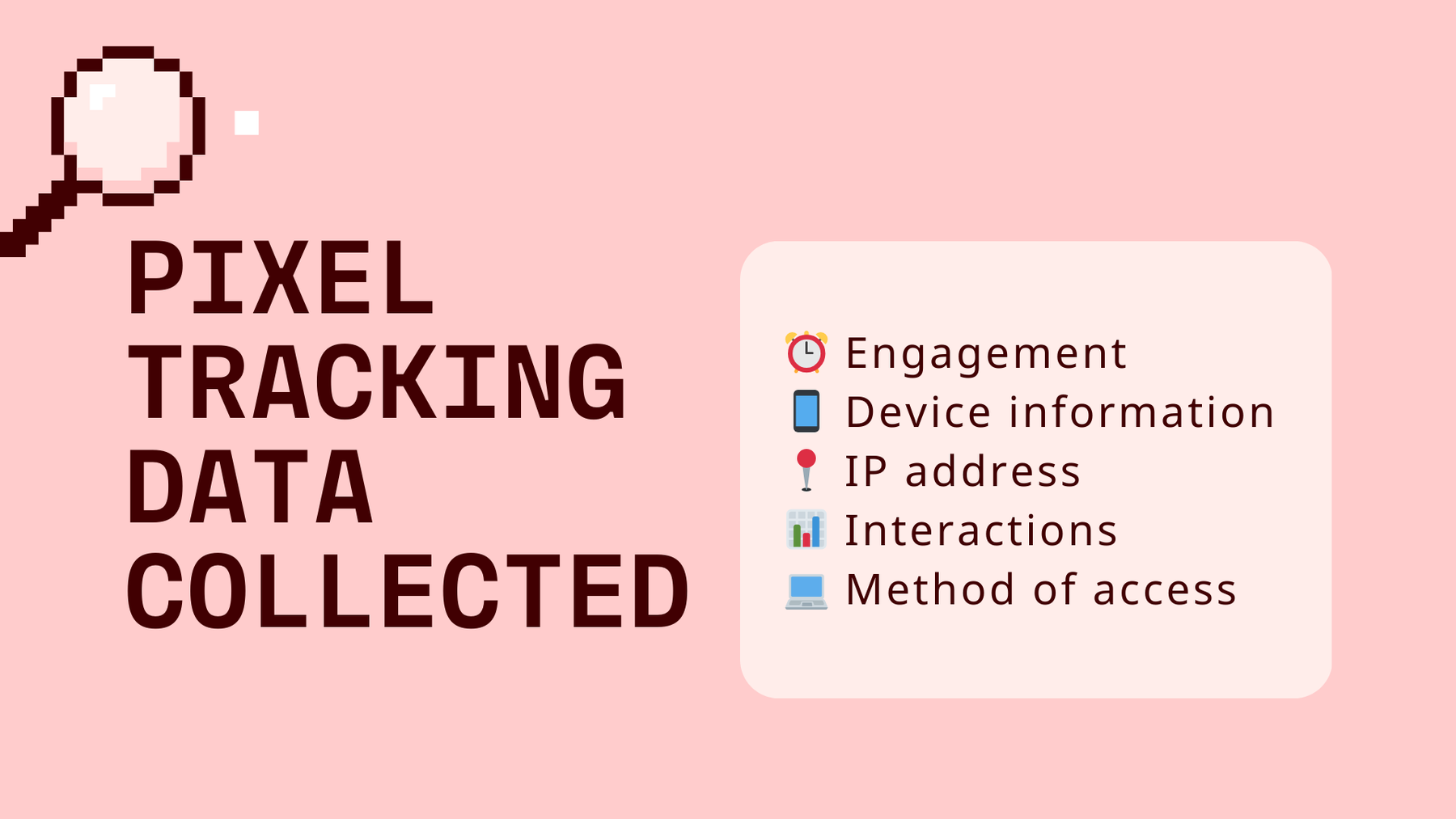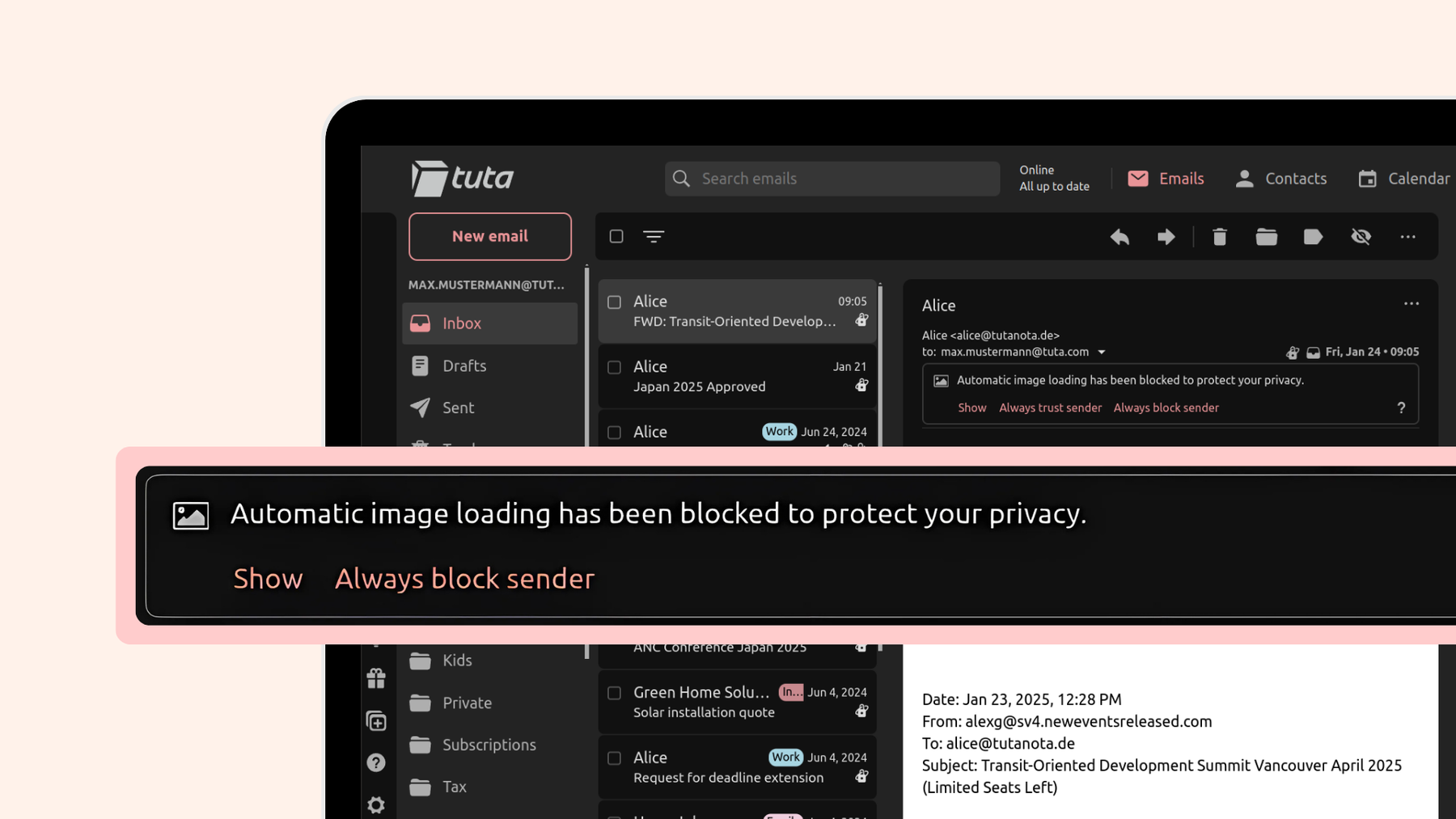What is a tracking pixel? (+How to stop email tracking)
Emails containing images often track you with tracking pixels. Here’s how you can stop being monitored and regain privacy for your mailbox.
What is an email tracking pixel?
A tracking pixel is a small invisible image, usually 1x1 pixels, that’s embedded into the emails you receive. While you can’t see tracking pixels when you open an email, these tiny trackers are often present collecting information about your interactions and behavior.
What data do pixel trackers collect from emails?


When you open an email with embedded tracking pixels the data collection begins! Usually, these trackers collect data related to how you engage and interact with the mail, your device information, IP address, and how you access the email.
Let’s take a look at the most common types of user data tracked and collected when you open and interact with an email:
-
When the email is opened and how you engage with it.
-
Your device information such as the device type, your operating system, and what type of browser you used.
-
Data related to your location through logging your IP address.
-
How you interact with the email, for example this monitors if any links clicked or if there was a **conversion ** (you clicked a link and bought the product / or signed up).
-
Information about how you access emails. These pixels identify what email client you use for example, Apple Mail or Gmail, and via the app or web browser.
Why are pixel trackers used?
Web beacons are used in different formats: in ads, web pages, and emails by website owners, advertisers, and marketers to gather your data. Tracking pixels are often embedded into emails to improve marketing efforts by gaining an insight into if the emails sent are opened, and if the links are clicked.
No matter where the pixel tracker is placed, the overall aim of tracking pixels is to track different types of user behavior and collect data.
Tracking privacy concerns
Big techs like Facebook and Google offer services for free yet still make huge profits. Through invasive tracking methods like app tracking and pixel tracking, these companies profit off your data. It’s no surprise that Google and Facebook’s largest revenue source comes from advertising.
It’s worth mentioning that although Google is popular, it’s also known for its invasive tracking methods, and through this Big G knows almost everything about you. Now, with endless lawsuits against Google ( like its incognito mode scandal) people are choosing to move away from the tech giant. For example by deleting Gmail, and going for the secure and private Gmail alternative, Tuta Mail!.
How does pixel tracking work in emails?
Tracking pixels are special types of image files that are hosted on servers owned by different companies for example: Meta, Google, or Ad agencies, and embedded into emails, websites, and ads. Let’s take a look at how these invasive trackers work when you open an email.
The email has HTML code containing tracking pixels
The email will contain a kind of HTML code snippet with the tracking pixel. This snippet is embedded in the HTML of the email.
When you open the email the snippet is triggered
As you open the email that’s embedded with the tracker, your email client or browser requests the pixel from the tracking provider’s server.
The data collection begins!
After this, the request starts to collect different types of information like how you engage with the email, device information like your device type, and even location data, through logging your IP address.
How to know if an email tracks you
Tracking pixels are built to track you behind the scenes, so knowing which emails contain these tiny trackers can be difficult and tiresome. Luckily there are ways to determine if pixels are present, and even better there are email providers that automatically protect you from tracking like Tuta!
1. Consider who the email sender is
If you receive emails from marketing services, or any services you use like Linkedin, Facebook or Pinterest there most likely are pixels embedded.
2. Get a browser extension
If you access your emails via web a browser another way to know what emails are tracking you is through browser extensions like PixelBlock or Ugly Email that can alert you or identify emails with trackers.
Advanced tracking protection with Tuta Mail
The best way to stop email from tracking you is to use a privacy-focused email provider that automatically blocks trackers like Tuta! As a free end-to-end encrypted email and calendar provider fighting for your privacy it’s the most secure mail provider on the market.
Tuta is private by design and offers robust security and privacy measures in place to not only stop pixel tracking but to ensure no one, including Tuta can access your private mailbox.


With Tuta Mail you do not need to worry about pixel trackers in your mailbox! Tuta automatically blocks image loading of emails to ensure that there’s no tracking happening behind the scenes.
How Tuta automatically stops tracking
Images are blocked by default
In Tuta no images are automatically loaded unless you actively enable image loading.
IP addresses automatically stripped
Tuta does not include email information (IP address) in the emails you send.
No targeted ads
Tuta is the opposite of big tech: it does not profit from your data. With end-to-end encryption you’re guaranteed that Tuta cannot scan your mailbox, it doesn’t target advertise, and it implements data minimization practices.
These are just a few ways Tuta ensures no snooping happens in your mailbox. Check out our full review of why Tuta Mail is the most secure email service.
Say no to tracking
It’s evident that online tracking in whatever form has become an invasive issue that often feels like we can’t escape. It’s also scary to think that emails, arriving in your private mailbox are tracking you. That being said, if you do want more privacy, especially for your (not so private) mailbox, you can easily delete your Yahoo, Outlook or current mail account, and switch to Tuta Mail - the mail provider that blocks trackers automatically.


